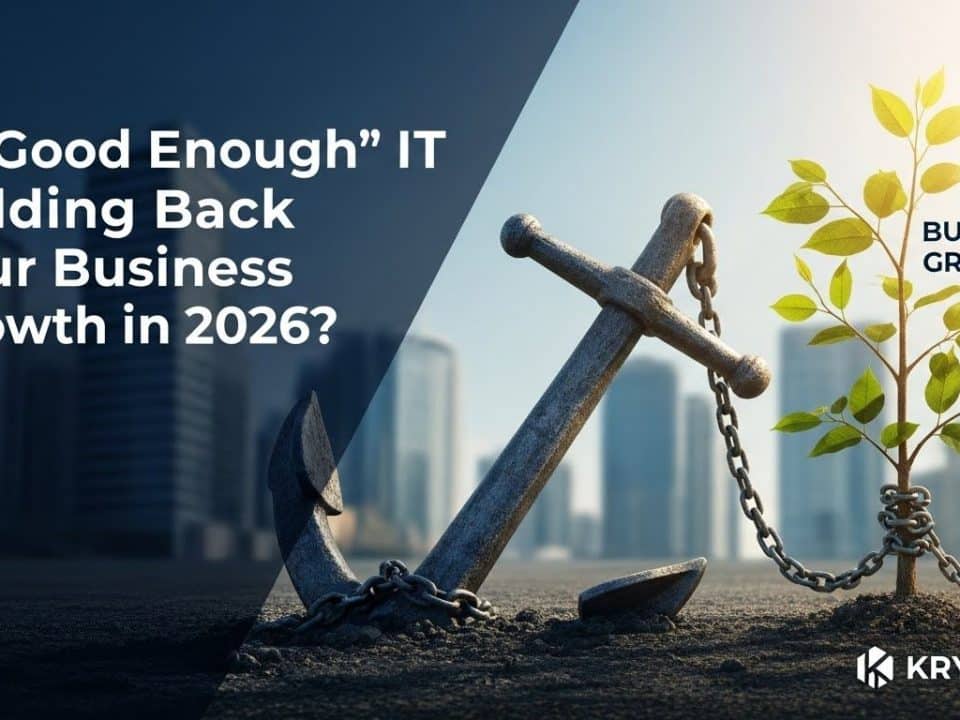
Ransomware 2.0: The Evolving Nightmare
June 10, 2025
Your Strongest & Weakest Link: The Human Element
June 12, 2025Why Your Trusted Software Could Be Your Biggest Cybersecurity Risk
In today’s interconnected digital ecosystem, businesses rely heavily on a complex web of software, from operating systems and productivity suites to specialized applications and open-source libraries. This intricate network forms your software supply chain. While these tools are essential for operations, they’ve also become an increasingly attractive and potent attack vector for cybercriminals – leading to a surge in software supply chain attacks. For Small and Medium-sized Businesses (SMBs) in Houston, understanding this evolving threat landscape is no longer optional; it’s a critical element of your overall cybersecurity posture.
These attacks exploit vulnerabilities not just in your direct systems but in the software you rely on, potentially creating widespread and devastating consequences.
Understanding Software Supply Chain Attacks
A software supply chain attack targets any point in the software development and distribution lifecycle. This could include:
- Developers and Their Environments: Compromising developer accounts, injecting malicious code into software during development, or exploiting vulnerabilities in their tools and infrastructure.
- Build and Release Processes: Tampering with build servers, injecting malware into software updates, or compromising code repositories.
- Third-Party Components: Embedding malicious code or exploiting vulnerabilities in open-source libraries, third-party APIs, or other dependencies that your software relies on.
- Distribution Channels: Compromising software update mechanisms, app stores, or other distribution platforms to deliver malware directly to end-users.
- Vendors and Service Providers: Targeting managed service providers (MSPs) or other technology vendors who have access to multiple client networks, allowing for widespread attacks.
The goal of these attacks is often to gain widespread and stealthy access to numerous organizations simultaneously, leveraging the trust placed in legitimate software providers.
Why Software Supply Chain Attacks Are So Dangerous
These attacks pose a significant threat for several reasons:
- Widespread Impact: A successful supply chain attack can compromise thousands, or even millions, of users or organizations with a single breach. Think of the ripple effect when a widely used software component is compromised.
- Trust Exploitation: Victims often inherently trust the software they are using, especially if it comes from a reputable vendor. This trust can lead to delayed detection and a lack of suspicion when malicious activity occurs.
- Stealth and Persistence: Attackers often insert subtle, hard-to-detect malicious code that can remain dormant for extended periods, allowing them to gather intelligence, establish backdoors, or prepare for future attacks.
- Complexity and Opacity: Modern software relies on a vast number of dependencies and components, making it difficult for organizations to thoroughly audit and verify the security of their entire software supply chain.
- Difficult Remediation: Once a compromised component is embedded within your systems, identifying and removing it can be a complex and time-consuming process, often requiring significant resources and expertise.
- Downstream Consequences: A breach originating from a supply chain attack can have severe downstream consequences for your customers, partners, and other stakeholders, leading to reputational damage, legal liabilities, and loss of trust.
Real-World Examples Highlighting the Threat
Several high-profile incidents have brought the danger of software supply chain attacks into sharp focus:
- SolarWinds Supply Chain Attack (2020): Threat actors compromised SolarWinds’ Orion network monitoring software, injecting malicious code into updates that were then distributed to thousands of customers, including government agencies and Fortune 500 companies. This allowed for widespread espionage and data theft.
- Kaseya VSA Attack (2021): Hackers exploited vulnerabilities in Kaseya’s VSA remote management software, which is used by many MSPs. By compromising Kaseya’s update server, they were able to deploy ransomware to hundreds of MSP customers and their downstream clients simultaneously.
- Log4j Vulnerability (2021): The discovery of a critical vulnerability in the widely used Apache Log4j open-source logging library sent shockwaves through the industry. This flaw could be exploited by attackers to gain remote code execution on millions of systems worldwide, highlighting the risk associated with relying on open-source components.
Protecting Your Houston SMB from Software Supply Chain Attacks
While the complexity of the software supply chain can be daunting, there are proactive steps Houston SMBs can take to mitigate their risk:
- Maintain a Software Bill of Materials (SBOM): Develop and maintain an inventory of all software components your organization uses, including third-party libraries and dependencies. This provides visibility into your software supply chain and helps identify potentially vulnerable components.
- Implement Vendor Risk Management: Thoroughly vet your software vendors and service providers. Assess their security practices, incident response plans, and track record. Understand their own supply chain security measures.
- Practice Least Privilege Access: Limit the permissions granted to software and users. This can help contain the impact if a compromised component or account gains access to your systems.
- Keep Software Updated (But Verify First): Regularly update your operating systems, applications, and security software with patches from trusted sources. However, be cautious about immediately deploying updates; consider a testing phase to ensure updates are legitimate and don’t introduce new issues.
- Utilize Software Composition Analysis (SCA) Tools: Implement tools that can automatically scan your codebase and dependencies for known vulnerabilities and licensing issues.
- Secure Your Development Environment (if applicable): If your SMB develops its own software, implement secure coding practices, conduct regular code reviews, and secure your build and release pipelines.
- Monitor Network Activity: Implement robust network monitoring tools to detect unusual or suspicious activity that might indicate a compromised software component communicating with external command-and-control servers.
- Enhance Endpoint Security: Deploy advanced endpoint detection and response (EDR) solutions to identify and block malicious activity originating from compromised software on individual devices.
- Implement Strong Authentication: Use multi-factor authentication (MFA) for all critical accounts, including those used by developers and IT administrators.
- Stay Informed: Keep abreast of the latest cybersecurity threats and vulnerabilities related to software supply chains by following reputable security news sources and advisories.
The rise of software supply chain attacks underscores the importance of a holistic and proactive cybersecurity strategy. Houston SMBs can’t afford to overlook the risks inherent in the software they rely on. Krypto IT can help you assess your software supply chain vulnerabilities and implement the necessary safeguards to protect your business from this increasingly prevalent threat.
Contact us today to schedule a free consultation and learn how we can help you secure your software supply chain and build a more resilient cybersecurity posture.




